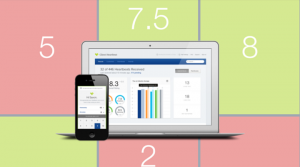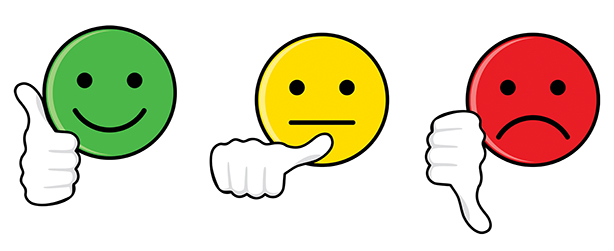Measure Happiness: 5 Customer Experience Metrics You Should Start Tracking
How great does it feel when hard work finally pays off? After months of dedicated effort, you managed to build a steady customer base. This step alone deserves a virtual pat on the back. But, before you pop open the champagne, you need to think your next step very carefully. If your customers aren’t satisfied with your product or service, your reputation might suffer. Not to mention that customers will go to the competition before you can say “client retention.”
If you are a seller or if you run a small business, you probably know already how important customer interactions are. And you probably think you’re offering amazing customer service. But, here’s a troubling fact. According to a study from HelpScout, 80% of companies believe they deliver great customer service while only 8% of customers think the same companies deliver superior customer service.
Ouch!
But, here’s the good news: there are metrics you can collect to quantify the value of your customers’ satisfaction. More than that, these metrics can help you improve customer experience and ultimately your brand’s reputation.
But, enough promises. Let’s get down to business. Here are the five customer experience metrics you need to track.
- Response Time
“Contact us! We’ll get back to you within 24 hours.”
If you ever shopped online, you’ve probably seen this message on just about any store’s website page. The idea behind it is pretty straightforward: Customers want businesses to respond to their issues promptly. If a business fails to meet this expectation, the customer satisfaction level drops sharply.
However, it is important to know that customers have different expectations for different support channels. Obviously, they expect a faster response time when they contact a business via phone compared to email.
Phone: It goes without saying that phone continues to be the most preferred channel for customer support. Customers find telephone interactions to be more personal and engaging than email, and quicker. According to different studies, 53% of customers consider three minutes to be a reasonable response time while waiting for an agent.
Email: Offering email support is a bit trickier. Most companies have a response time of 24 to 48 hours, but if you run a small business online, you need to strive for better times. Buffer, for instance, works hard to reply within 60 minutes, an impressive response time.
Chat: If you are going to offer chat support, it’s important to be quick. Try to make sure that response times are less than one minute.
- Problem-Solving Time
The longer it takes you to resolve a problem, the less happy your customers will be. On the other hand, according to Buffer, companies who can provide quick and accurate fixes have higher customer satisfaction ratings than those that don’t present any issues for their customers.
How can you tell if the number of interactions is big and can constitute a problem? The math is rather simple: the ideal number of interactions is one – the customer sends you a complaint, and you provide a fix. If it takes more than four interactions to solve an issue, then it might mean that the customers are not being put in touch with the right agent.
- Measure Customer Satisfaction after Each Interaction
Have you ever received a customer satisfaction survey after a chat with a company? That is a great example of how businesses can measure customer satisfaction after an interaction.
The great thing about this metric is that it allows you to observe how your agents addressed a problem and how happy the customer was with the experience delivered. If a customer was not satisfied, you could take rapid measures to improve your customer service support.
You can use tools such as Hively to automate this process and send customer satisfaction surveys after a chat or email interaction.
- Overall Customer Experience Rating
Individual interactions are important and can make or break a small business. But, it’s crucial to look at the big picture and measure overall customer satisfaction.
By measuring your customers’ overall satisfaction, you can get an accurate idea of how happy they are with your customer support service and what you can do to improve their experience. According to one study, an overall satisfaction of 30% is better than measuring satisfaction for each interaction.
Just think about it: a customer is not likely to stop doing business with you if he had a bad experience, say a delayed delivery. But, if you only measure individual experience, you won’t be able to tell how happy your customers are with the overall experience you deliver.
- Measure Contact Volume
Another great way to improve customer satisfaction is to look at contact volume and identify the hours or days that get the most calls and inquiries. This data will let you know when it’s crucial to dedicate special attention to customer interactions and prepare your agents.
Most customers tend to contact customer support early in the morning (between 8 am and 9 am) or late in the day (between 4 pm and 5 pm). However, this may not be the case for you. After looking at contact volume, you may notice that your customers tend to contact you during lunch hours, or immediately after they were faced with an issue.
Track the frequency of support calls or emails to get an idea of when your customers prefer to contact you and also, take note of the most common questions they ask. That way you can ensure your customer support team is ready to answer these requests promptly and in a professional manner.
Measuring customer satisfaction doesn’t have to be a guessing game. There are metrics as outlined above you can track to analyze and improve your customer service and ultimately your reputation.







Leave A Comment